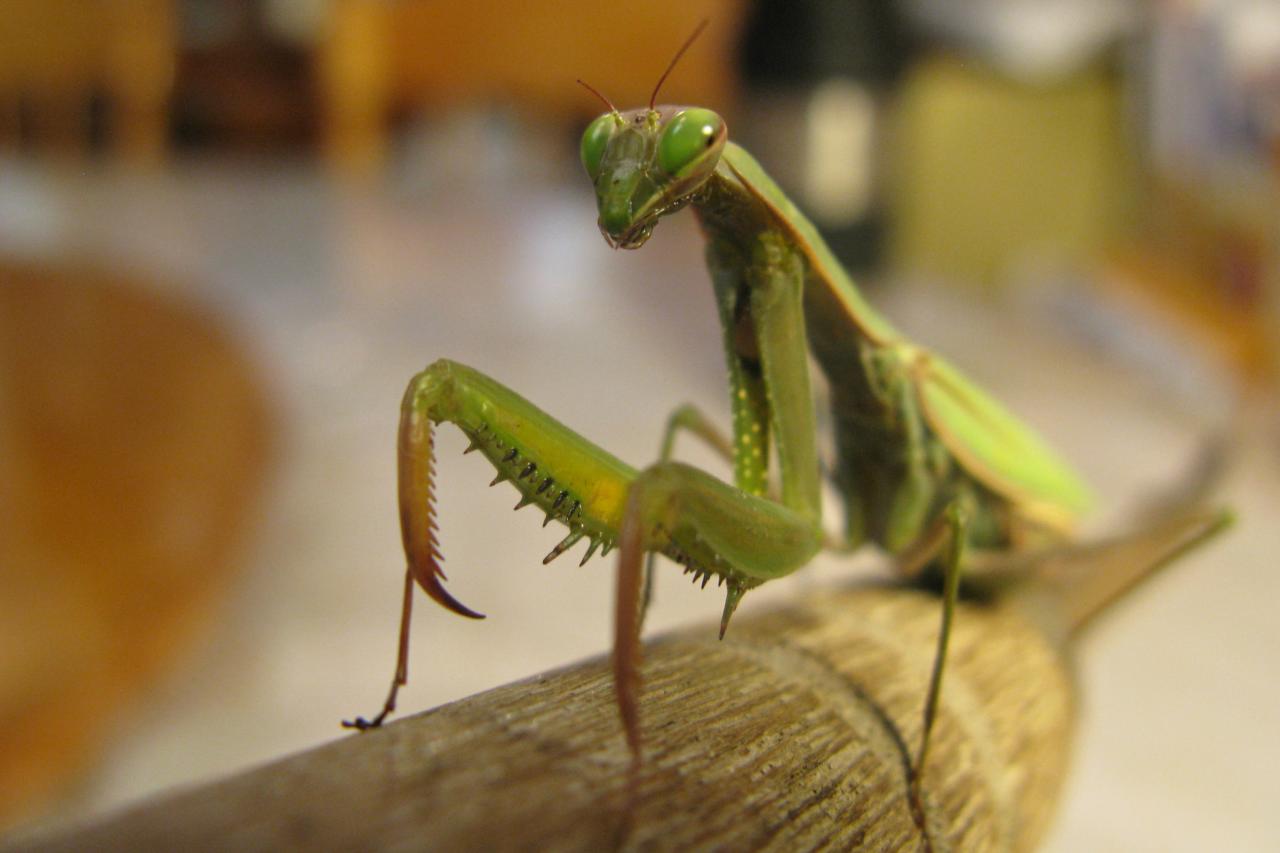About the Praying Mantis
The praying mantis belongs to a broader group of insects, formally known as the praying mantids. The praying mantids and mantises receive their name from the way in which their front legs are bent, as if engaged in prayer. Mantises are typically green or brown in color. The praying mantises are divided into three physical sections: the head, the thorax (less formally known as the “neck”), and the abdomen (or the “body”). Female praying mantises often have a larger abdomen than male praying mantises. There is evidence that praying mantises closely share a common ancestor with cockroaches and termites.
There are about 2,000 species of praying mantises, but only about 18 of these species have been known to exist in North America. The majority the species live in the tropics. The mantises we see in the United States are actually considered to be an exotic species.
Praying Mantises as Deadly Predators
Praying mantises are truly intimidating, fierce predators to the other insects around them. Unlike other insects, they have the ability to turn their heads a full 180 degrees to look for prey. These fascinating creatures even have five eyes, enabling them to look at multiple surroundings simultaneously. Two of their eyes, located on either side of their heads, are complex and capable of seeing color. The three simple eyes are located between them. In addition to their keen vision, the green or brown color of praying mantises enables them to blend in with their surroundings, making it easier for them to avoid predators (such as birds, bats, and spiders), and to sneak up on their prey. They use their two prominent and spiky front legs to capture their prey. They do this so fast that it’s hard for humans to even see!
Praying Mantis Eating Habits
Although they predominately feast on insects such as grasshoppers, flies, moths, and crickets, they are also cannibals. The most prominent manner in which they eat their own kind occurs after, and sometimes even during, the mating process. The female frequently will eat the male. This bizarre action occurs because the female praying mantis needs a large energy source (food) in order to produce her eggs. Furthermore, male praying mantises are not known to live much longer after mating with the female. Therefore, it makes biological sense for the female to eat the male as an energy source to make eggs to help perpetuate the species. Female praying mantises don’t often exhibit this seemingly strange behavior when they are well-fed prior to mating with the male.
Another reason why the female praying mantis will sometimes bite off the head of the male is because he has the ability to copulate more effectively when his brain (which controls inhibition) is detached from the remainder of his body.
Praying Mantis Eggs
When a female praying mantis lays her eggs, she will seal them in a protective substance resembling Styrofoam. This substance, which she discharges from her body, will form a case (its scientific name is an “ootheca”) to keep the eggs protected and warm for the winter.
Byline
Though insects are of course fascinating to learn about, Dennis Freud understands that they’re often troubling to live with, which is why he recommends bainpestcontrol.com.
Image credit goes to joeysplanting.





